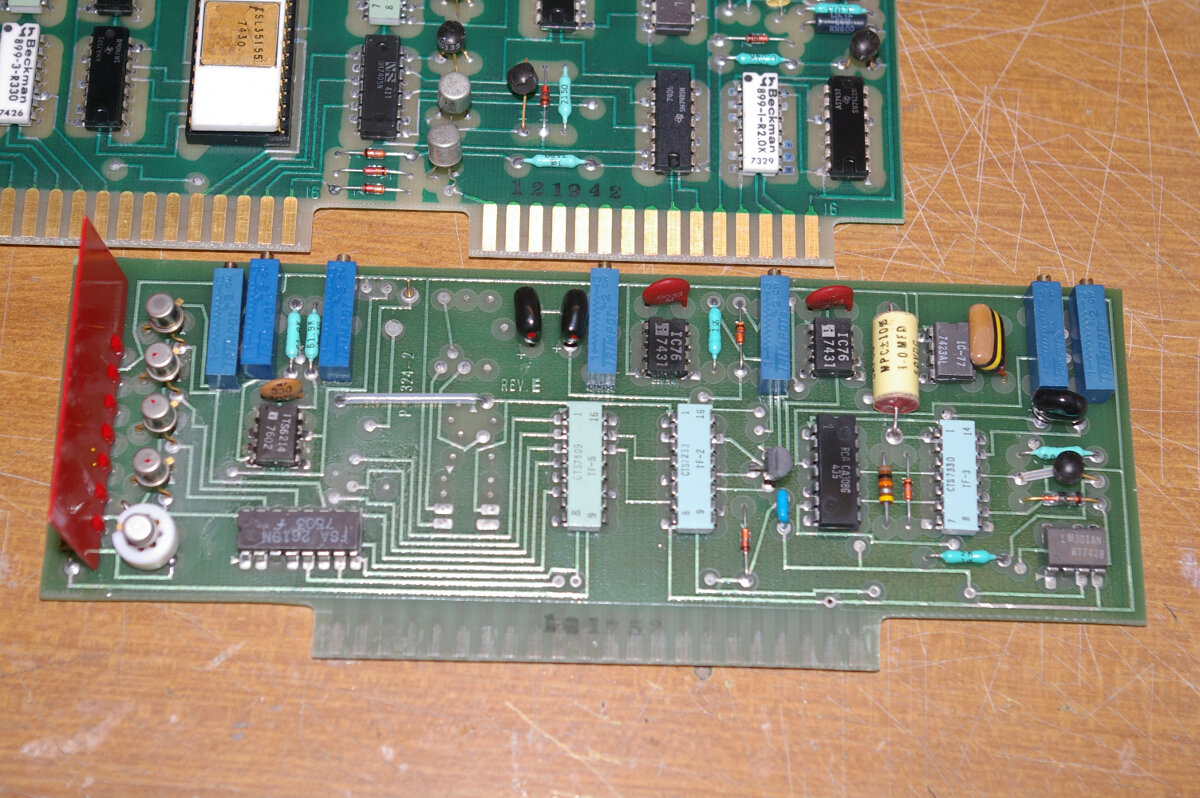An electrometer is 'just' a voltmeter with a high input impedance, and in this case high
means really high. This enables this kind of instrumets to make measurements otherwise
impossible. Other than measuring voltage of devices with high output impedance,
they are useful for measure very low currents or very high resistances.
The working principle of 616 is simple, the first stage is a 1:1 buffer followed by a variable
gain amplifier that feeds the integrating ADC of an autoranging voltmeter. Full scale is 2000 counts.
The buffer output is routed to the back of the instrument, and the specs tell that it will
settle at less than 20ppm of input voltage, so it could be connected to a better meter.
The buffer is reconfigurable to perform voltage, current (shunt or feedback),
resistance and charge measurements.
And now let's take a look inside:

it's very clean, the black box is the input transformer, around it there are
filtering capacitors and voltage regulators. On the bottom there are logic and A/D boards
while on the top, under the aluminium shielding, there is the input preamplifier and
range selector. The two canned HV transistors between the shielding and the transformer
are part of the 1:1 buffer, and are used to generate the X1 output, that is a 1:1
buffered representation of the input voltage seen by the instrument, up to +-200V.
Another view:

This is the logic board, the white chip is the “brain” of the autoranging meter and ADC,the
rest is the display driving logic


This is the ranging board, fet switches and caddock resistance network perform the variable
gain amplifier function, while the socketed device on the bottom is a dual jfet



This is a closeup of the PSU section:
